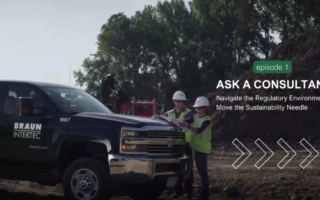Whether it is the weight of waste being shipped out every month or the speciated air emissions from your wastewater treatment facility, recordkeeping is the cornerstone to most compliance programs. As both a tool for program managers onsite and a common violation found by inspectors, recordkeeping produces paperwork we all work with, yet rarely benefit from. Below are three tips to minimize the ongoing effort of recordkeeping while meeting your requirements.
1. Take a step back and review the actual, current, recordkeeping requirements.
Have you been recording the collection dates for Class-2 waste with the same tenacity that you track your hazardous materials? All waste is not created equal and does not need to be tracked with the same diligence. Cut out unnecessary recordkeeping tasks where possible.
Are you logging throughputs in accordance with last year’s Special Conditions? When you have an update to your permit, your operations, or your materials, it can cause even a perfect recordkeeping program to become flawed. Review your current permit and regulations to confirm you are capturing all the required data.
2. Look to operations and purchasing teams to understand what data is already being collected.
Does your operator already collect run-time information for the maintenance department? Operations and maintenance departments keep their own record, and it may be that they have already collected the data you need. Explore the existing recordkeeping programs to identify ways you can prevent doing double the work.
Does purchasing keep details on monthly chemical purchases going back decades? Look for allies in data collection among the business and administrative staff. Purchasing teams may keep the best records of materials coming onsite and the sales team may know most accurately what is leaving the site.
3. Consider opportunities to integrate the environmental recordkeeping programs.
Are you tracking cleaning solvents for both air emissions and waste recordkeeping? Integrating the environmental programs so that they use the same input data will reduce the amount of ongoing data entry required.
Can your TRI threshold determination calculations be formatted to (or linked to!) your throughputs for air emission calculations? Linking programs also confirms that accounting conventions in one program do not lead to conflicting data in another program.
Time spent upfront now can minimize the time required long-term for recordkeeping and more critically, save you from costly violations. You can integrate these three tips into your recordkeeping program to streamline efforts that support your operations.
If you have ever wondered how to streamline your air permitting process, be sure to attend our live webinar this month, “Air Compliance Fundamentals: Strategic Permitting that Supports Your Business”. This webinar will cover how to reduce regulatory burden with permitting and how to include environmental justice and dispersion modeling into your strategy.




